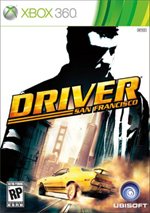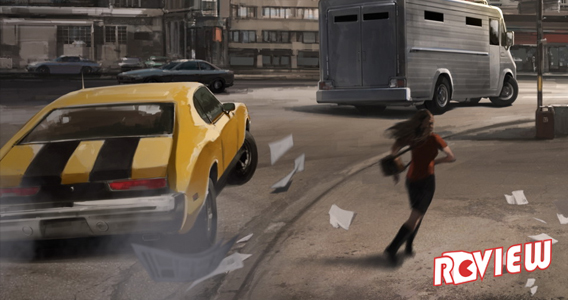
Before I begin discussing Driver: San Francisco, I feel it’s important to mention that I have an issue with driving games. There’s a conversation that happens between myself and any such game I sit down to play, and it goes like this:
“Use the handbrake for sharp turns, Brad!”
“Okay, driving game—oh, I made the widest possible turn, spun out and crashed into a wall. Thanks.”
As a result of my crippling deficiency, driving isn’t usually a lot of fun for me. The driving games I play are invariably the ones where I can mitigate my incompetence with offense. That is to say, there’s a gap between me and the amount of skill necessary to win a driving game, and I close it by shooting other drivers. Mario Kart, Extreme-G, Blur—these are the games I can contend in (just barely), because I can leverage missiles and mortars and heat-seeking koopa shells against my fellow racers.
Driver: San Francisco doesn’t have any of that—but it does have something even more unusual.
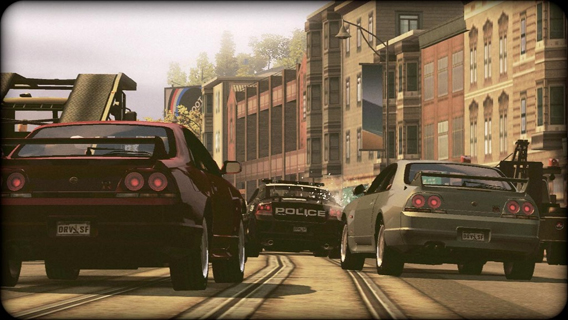
San Fran tries to close the gap between incompetent drivers and fun driving with its “Shift” mechanic, whereby main character Tanner can eject his consciousness from his body and sit down in someone else’s brain. This means that the player can take over any car on the road (except, sadly, enemies) and use them to assist in the completion of objectives.
The idea here is pretty simple: if you’re losing a race, start crashing civilian cars into opponents, or if you’re tired of your mediocre wheels, snatch something new right off the road.
The power to shift between bodies also works well for jumping haphazardly across the world, assuming different objectives and undertaking different mission imperatives. When Tanner jumps out of a body, he assumes a bird’s eye view of the road, allowing him to select other cars nearby—or, by increasing height, he can cut a path across entire city blocks to snatch up new missions.
It’s an extremely novel approach, cutting all the fat and leaving nothing but driving in the game. You’ll never get bored navigating to a mission or driving to a sidequest, because literally everything in the game is a shift away. The result is that Driver has exactly one speed; you’ll simply never stop racing through the streets.
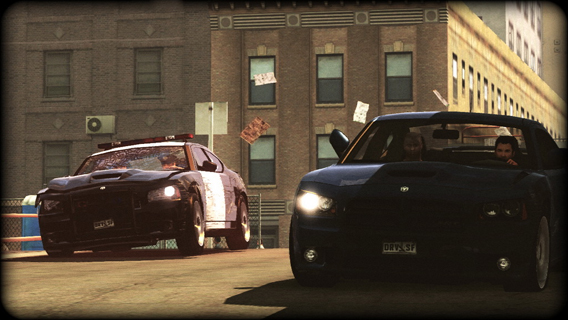
Shift gamplay applications, however, are a little more limited than I would have liked. In a chase, my primary instinct was to jump into a bus and turn it sharply to block and slow down my pursuers—but they were unfazed. They navigated around the obstacle perfectly and continued the chase, as if I had done nothing.
Unfortunately, the only way to reliably impede other vehicles is to pick a car traveling in the opposite direction and ram directly into the desired enemy—and cars can take more than one or two crashes to completely disable them.
More frustrating is that only Tanner’s vehicles seem limited by the physics of acceleration; enemy cars recover from crashes, spin outs, slowdowns and misdirection unreasonably quick, sometimes making talented driving moot, as the enemy will simply catch up instantaneously. This is especially maddening when attempting to escape enemy cars, as they seem impossibly adept at catching and crashing into the player vehicle, regardless of what moves the player employs.
That said, when the shift ability works, it really works. When driving a police vehicle in pursuit of a fleeing criminal, tapping a button will shift the player into another cop car in pursuit—making it easy to keep the chase going even if the initial vehicle spins out or crashes, and it’s touches like these that dramatically decrease the amount of time spent recovering from driving errors and reinforce the fast pace of the game.
Meanwhile, using civilian cars as weapons can dramatically change the shape of any race or pursuit, though to be fair, it becomes a little repetitive given the number of chases the game offers.
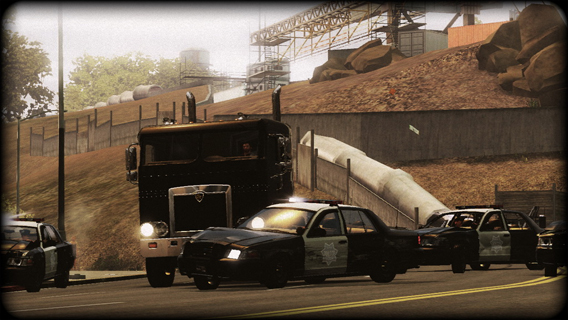
In addition to some nicely varied story missions (which may involve riding in a helicopter or exploding enemy cars with a tanker), there’s an entire mess of sidequests with their own bizarre objectives—from a selection of race types (some involving competing against other cars, others with more unusual objectives) to the more intriguing “Dares,” which demand eclectic driving feats.
There are a lot of interesting little twists on traditional racing conventions that make these missions more varied and interesting than they might otherwise be. One such task asks the player to drive a witness to a safe house while avoiding detection in back alleys—where main roads raise a meter that can lead to failure. Balancing the meter while also attempting to beat the clock to the safehouse made for a more interesting challenge than simply “Get there really fast,” and for someone who can’t muster interest in straight-out racing to save his life, that made a big difference.
Meanwhile, the core story of Driver is completely preposterous—but redeems itself by never taking itself too seriously. Though I couldn’t be bothered to care one whit about the main quest narrative, I got a kick out of shifting into other vehicles and hearing little snippets of the lives of other drivers. Wives berating their husbands turn panicked when Tanner takes control and decides to antagonize the police into a chase, while crude driving instructors get a lesson in manners when taken for incredibly unsafe joyrides. The sense of humor is pretty sharp, and though listening to a passenger scream about driving on the sidewalk can only be funny so many times, the work here goes a long way toward making shifting fun.
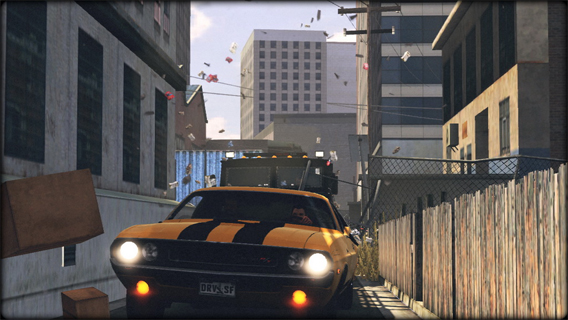
San Francisco also includes a fairly substantial multiplayer package, which uses the bizarre abilities of the core game to craft some equally unusual gametypes. While there are, in fact, standard races where drivers don’t have the power to ghost-drive other cars, many of the gametypes hinge on the shift ability.
For example, in Tag mode, players must ram the player with the Tag in order to claim said Tag for themselves—and the player who holds it longest wins. This is complicated by the fact that, at any moment, the oncoming traffic may suddenly be possessed by a rival player looking for a head on crash. However, clever players can duck into alleys or other low-traffic areas, thus denying opponents cars to shift to, and forcing them to close the distance with pure driving.
Several such modes blend racing with objective-based gameplay (even an attack and defend gametype), providing a pretty unique selection of games for a racer—though it’s worth noting that if your core driving skills are weak, you’re still unlikely to succeed, despite the availability of magical powers.
Driver: San Francisco is more than a little weird, but it leverages its odd features toward creating a comfortably varied experience, one that’s accessible even for the driving-game-impaired, like myself. These qualities, along with the non-stop pace, serve to elevate the title above some frustrating elements and a goofy story and make for a solid game.
Ubisoft Reflections
Distributor
Ubisoft
System
Xbox 360, PlayStation 3, Nintendo Wii, PC (Xbox 360 reviewed)
Modes
Singleplayer, Online and Splitscreen Multiplayer
Release Date
September 6, 2011 (X360, PS3, Wii); September 27, 2011 (PC)
*A copy of this title was provided by the publisher for review
